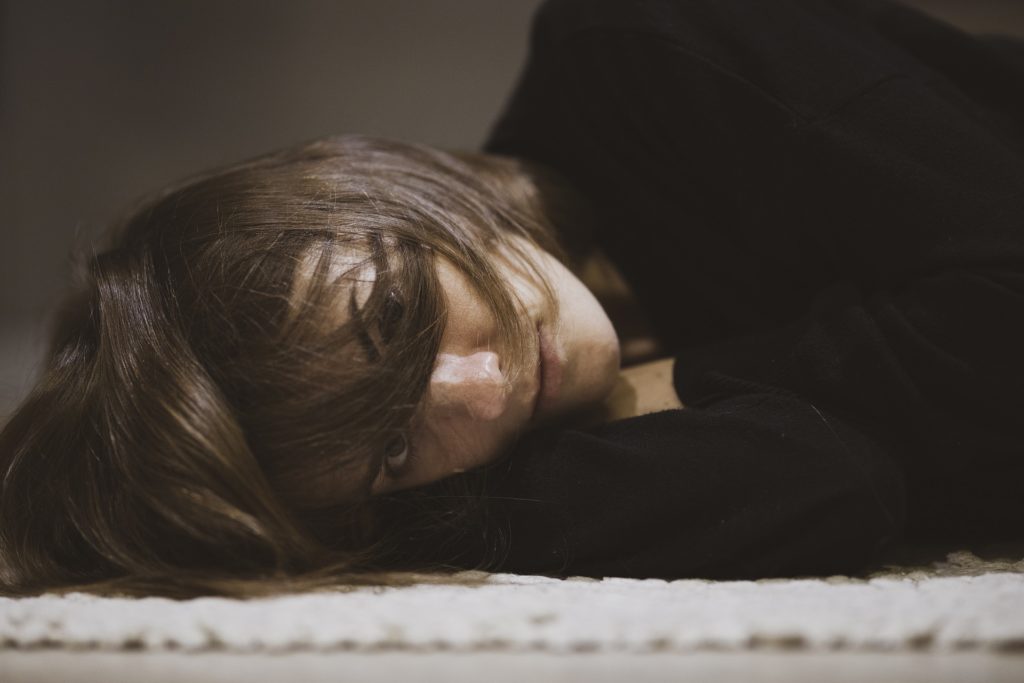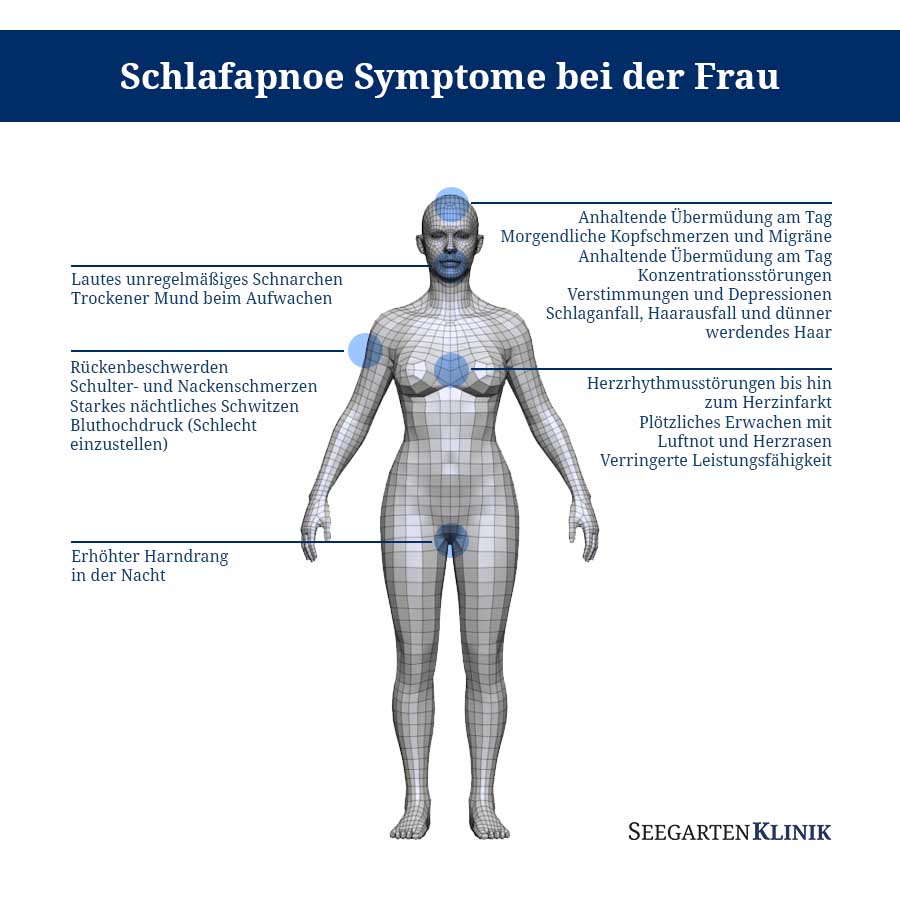
Unrecognized and untreated, the breathing disorder can trigger a variety of symptoms: Obstructive sleep apnea affects about one to two percent of women between the ages of 30 and 60 in Germany. Find out here how you can recognize the first signs and what options there are for a cure.
Sleep apnea is often overlooked in women because early symptoms such as difficulty sleeping through the night, back pain or depressive moods are attributed to multiple stresses from work and family. It is therefore all the more important that you always keep an eye on your health and have the first possible signs of sleep apnea professionally clarified.
What are the first signs of sleep apnea in women?
The most common symptoms of sleep apnea in women include a nighttime urge to urinate, morning headaches and the onset of hair loss. Fatigue that lasts throughout the day, concentration problems and tension in the neck and shoulder area can also be early signs of sleep apnea in women.
Recognize sleep apnea - the following symptoms often occur in women:
- Loud irregular snoring
- Increased urination at night
- Sudden awakening with shortness of breath and palpitations
- Heavy night sweating
- Dry mouth when waking up
- Morning headache and migraine
- Persistent overtiredness during the day
- Reduced efficiency
- Concentration disorders
- Upsets and depression
- (Poorly adjustable) hypertension
- Stroke
- Cardiac arrhythmias up to and including heart attack
- Back problems
- Shoulder and neck pain
- Hair loss and thinning hair

If you experience these or similar symptoms, this does not necessarily indicate sleep apnea. Especially in women, the symptoms can be atypical. Nevertheless, you should have the suspicion clarified. First take the sleep apnea test. If the self-test is positive, talk to your family doctor and have yourself referred to a specialist for further examinations.
The only way to cure sleep apnea in women and prevent symptoms is through causal therapy. If you would like to learn more about us and the innovative surgery, contact us here. We will be happy to advise you.
You can also find more information about sleep apnea in women and the individual symptoms in our well-stocked blog.
What is the cause of snoring in women?
The cause of snoring in women and men is identical. It is caused by a narrowing of the upper airways. As a result, the air breathed in is drawn in faster and at a higher pressure, which causes flaccid tissue in the mouth/throat to vibrate. The fluttering tissue eventually triggers the typical snoring sounds.
Even though loud irregular snoring is considered one of the most common and characteristic symptoms of sleep apnea, the breathing disorder can also occur without the typical snoring sounds. Sleep apnea without snoring is mostly seen in women.
It is only with increasing age that women snore more. The main reason for this is the hormonal change with the onset of menopause. During menopause, estrogen and serotonin levels drop. This gradually leads to a slackening of tissue in the mouth/throat area, among other places.
The slackened tissue is sometimes one reason why women after menopause often not only snore but also develop sleep apnea, accompanied by other typical symptoms. Factors such as obesity and predisposition also play a role.
Possible factors that promote sleep apnea:
- Overweight
- Smoking
- Alcohol
- Drugs
- Sleeping pills
- Assessment
- Enlarged pharyngeal tonsils
- Curved nasal septum
- Enlarged polyps
- Jaw malformation or malposition
- Enlarged tongue or uvula
- Sagging pharyngeal walls